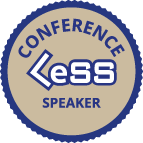Agile transformation and the elephant in the room
The initial success of agile has resulted in a variety of scaling attempts, and a range of business agility frameworks. Many large organizations are today on an agile transformation journey in some form or shape. This has come, however, with a few caveats. Due to its birthplace in software development and its focus on how teams work, a range of corporate management issues were left out of scope for early agile, for instance, but not limited to, budgeting. The fact that IT functions embraced agile did not solve the many fundamental conflicts between traditional corporate processes and agile. Beyond Budgeting, born a few years before the Agile Manifesto, was developed as a challenge to traditional corporate management, and therefore it addresses the many issues early agile didn’t need to. Beyond Budgeting was about business agility long before the term appeared. It is the missing link in many agile transformations, and if left unaddressed, transformation success is highly unlikely. Nobody talks about “scaling” Beyond Budgeting because it comes scaled. Although there are many similarities between the Beyond Budgeting principles and the Agile Manifesto, there are also some important differences. And there is an elephant in the room, a problem agile has been suffering from since its early days. Although there have been complaints, little has happened. Maybe because the annual budget was seen as something given, a law of business, unavoidable and untouchable. This is all wrong. There is no such law, and if this elephant isn’t addressed, any agile transformation will struggle. Traditional budgeting is probably the most fundamental barrier there is to an agile transformation. Not just the annual budget and the budgeting process itself, but just as much the mindset behind it: people can’t be trusted, the future is predictable. These assumptions are the antithesis of agile. It doesn’t get more unagile. The agile principle of continuous delivery of software functionality instead of big batch releases is a classic example of philosophy crash. An annual cost budget is a big batch of decisions and resources and not a continuous delivery of funds as needs appears. I have been a fan of agile since its early days. It has over the years done wonders for many organisations. I have, however, a recommendation and a few concerns. The Agile Manifesto needs an update. Although it has been surprisingly robust, given its birthplace, the concept is now applied way outside of its original scope. An update reflecting this would make the Manifesto more relevant and easier to understand and implement for the many without a background in software development. Now to my concerns. Lately, we have seen the emergence of an agile industry. I see so many actors in the community turning into commercial machines. Some even seem to enter only with this purpose in mind. Certification has become big business. It provokes me when I hear about expensive re-certifications being required every year. Also, some scaled agile implementation frameworks do, unfortunately, seem to have been developed simply to be acceptable to organisations that want to pretend they are agile but maintain top-down decision-making hierarchies. Agile theatre is a label I often hear, and I understand why.
Furthermore, Bjarte conducts an additional workshop "Beyond Budgeting – Business agility in practice" on the 29th of September in the center of Berlin.
As a LeSS conference participant, you will receive a 10% discount on the workshop price (code less2023). More info and the link to registration can be found here.
Description of the workshop
This workshop will address how an entire organization can be run in an agile way, where people and interactions are more valued than processes and tools, and where responding to change is more important than following a plan. You will get unique insights into Business Agility in practice, both from a managerial, financial and human perspective. You will benefit from Bjarte Bogsnes’ extensive experience. He has helped companies all over the world getting started on a Beyond Budgeting journey, including his employer Equinor (formerly Statoil) – where the budget (and much more) was kicked out. This and many other great case stories and practical examples will be shared.
Learn how to trust and empower without losing control, and how to redefine performance – with dynamic and relative targets (or no targets at all) and a holistic performance evaluation. Understand how dynamic forecasting and resource allocation works, and also other examples of self-regulating management mechanisms, including transparency. Bjarte will also share insights into KPI and OKR pitfalls, and bonus problems.
Learn from the fringes! Understand how management innovation can provide just as much competitive advantage as technology and product innovation! And last but not least, understand why there can be no true agile transformation without Beyond Budgeting.
Outline:
– The problems with traditional management, including budgeting
– Beyond Budgeting – the adaptive management model
– the background
– the philosophy
– the 12 principles
– Companies on the journey around the world; examples of how they operate
– The Borealis story – going Beyond Budgeting before Beyond Budgeting
– the Equinor (formerly Statoil) l story – the “Ambition to Action” model;
– redefining performance – dynamic and relative targets and a holistic performance evaluation
– dynamic forecasting and resource allocation and no traditional budgets
– from calendar-driven to event-driven
– examples of self-regulating management mechanisms
– KPI and OKR pitfalls
– The target problem
– The bonus problem
– Beyond Budgeting and agile transformation
– Implementation experiences and advice
– The Beyond Budgeting Roundtable


